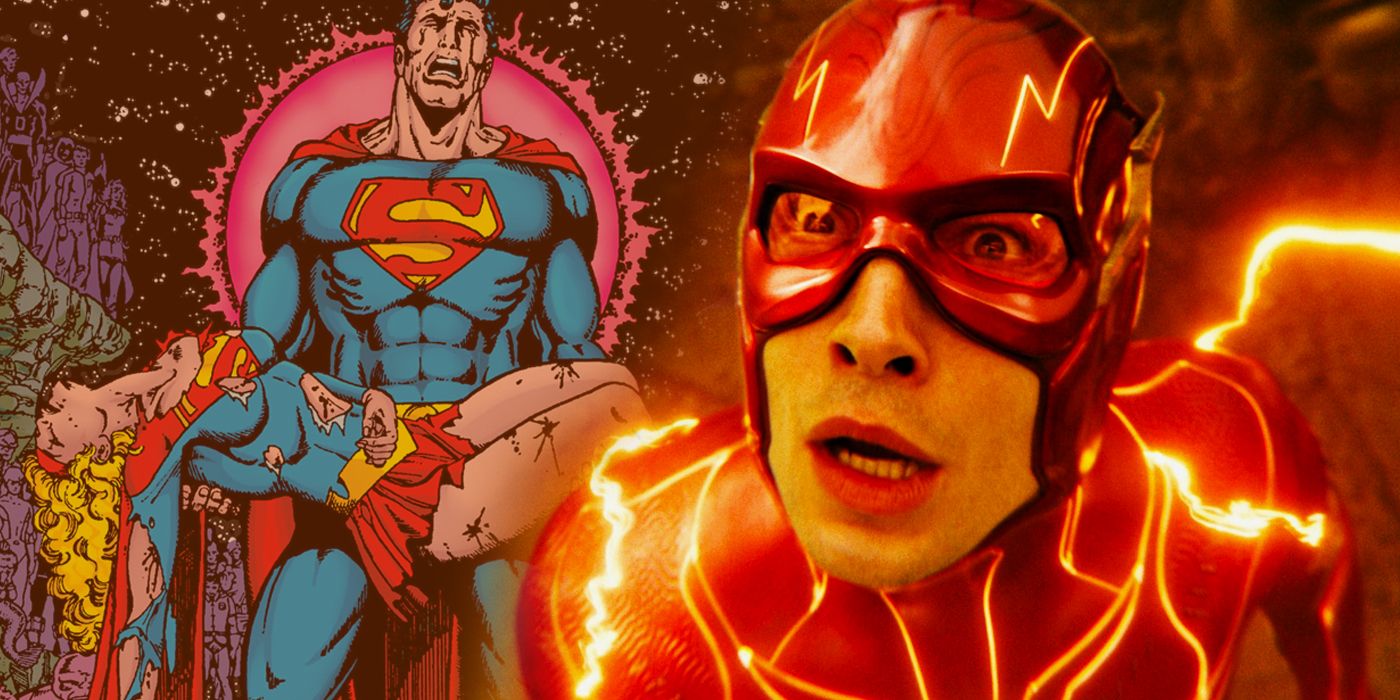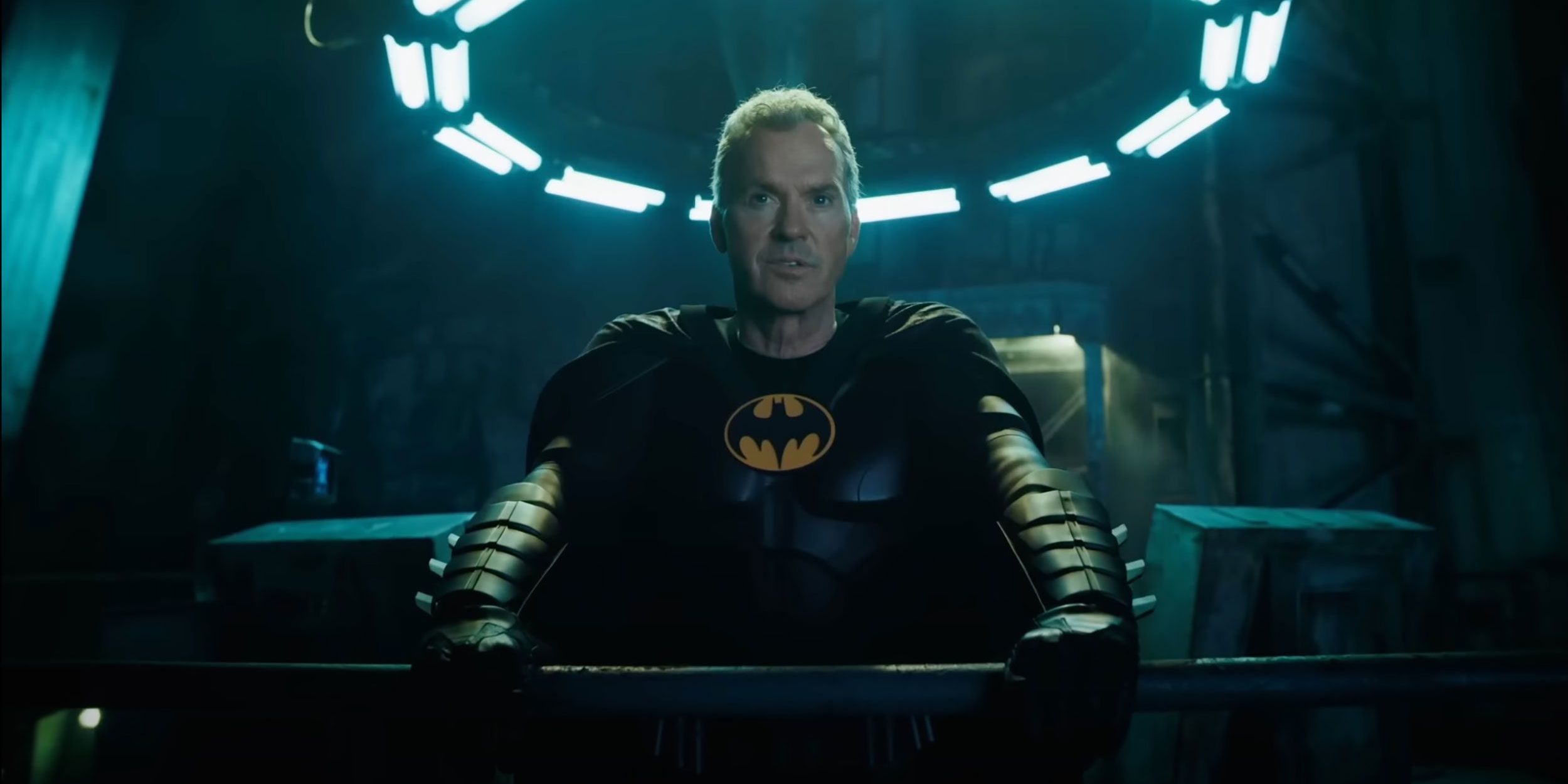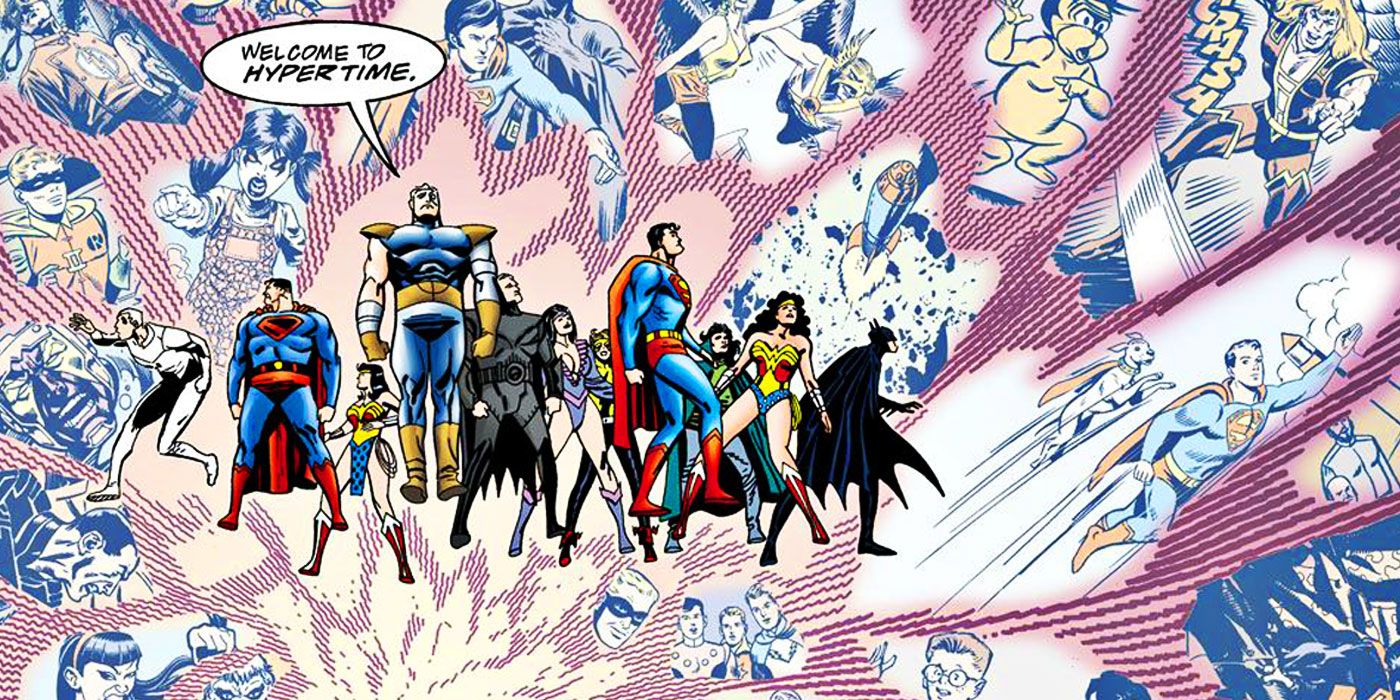CBR supports the hard work of creators and industry professionals to create movies fans all know and love, but it's important to remember the ongoing controversy with Ezra Miller. You can find CBR's continuing coverage of Miller here.
The following contains spoilers for The Flash, in theaters now.
The Flash seemingly ends the DC Extended Universe, but it also gives glimpses of various different realities. Through the cinematic trend of the Multiverse, the movie explores divergent incarnations of popular DC heroes, some of which hail from older movies. While the Multiverse might be the crux of this premise, the movie's take on the concept is actually somewhat erroneous.
The Multiverse as envisioned in The Flash has a lot of similarities to the way in which the idea manifests in the comic books, but with some key differences. This makes it quite a bit like Hypertime, an idea that was introduced to essentially replace the DC Multiverse in the comics of the 1990s. Given that Hypertime has only recently become relevant to comics again, it's strange that these two fairly distinct concepts are conflated in the movie.
The Flash Movie Conflates the DC Multiverse With Hypertime
In the middle of The Flash, Barry Allen and his younger counterpart seek help in order to deal with the threat of the invading General Zod. This comes after the older Barry had rewritten reality by saving his mother Nora from being murdered. Thus, this new world's heroes are very different, with Ben Affleck's Batman being replaced by an older version of Michael Keaton's Batman. Upon explaining their current time-travel and Multiverse predicament to the weathered Bruce Wayne, the former billionaire playboy gives an explanation of his own.
His way of illustrating the Multiverse is that each timeline is a spaghetti noodle. Placing them atop each other instead of parallel to each other, Bruce states that there are certain points where each world (or noodle) intersects in a way. This is why these worlds all have similar concepts such as Superman, Batman and other heroes. Nevertheless, each noodle will taper off into its own tributary, explaining the contradictions of the many continuities. Of course, Barry's actions have turned the whole thing into a sauce-covered hot mess, resulting in the distraught new timeline. This is a good synopsis of what Barry did in the movie, but it's not quite how the DC Multiverse is supposed to work.
In fact, it's far closer to Hypertime, in which time was a river that constantly fed into different bodies of water, so to speak. That was at one point the post-Crisis on Infinite Earths explanation for how there might be divergent incarnations of DC heroes or how seemingly destined futures would be averted. The simplest action would make these timelines diverge from each, even if similar characters and events typically filled them both. It's exactly the same as Batman's Multiverse ideation in The Flash, but it simply has the wrong name.
The DC Multiverse and Hypertime Are Two Separate Entities in the Comics
The Flash has always been integral to introducing the idea of the Multiverse, especially when it comes to the legacy of the Flash mantle. Barry Allen debuted in the Silver Age of Comics, and it was later established by a trip through the Multiverse that Jay Garrick -- the Golden Age Flash who fought as a member of the Justice Society of America -- lived on another, somewhat similar world known as Earth-2. That world had its own Superman, Batman, Wonder Woman, Atom, Hawkman, Green Arrow, Green Lantern and Aquaman, though some of these heroes didn't even have the same secret identities as in Barry's world. DC would promptly use the Multiverse idea quite a bit, but it eventually became too cumbersome and confusing, especially for newer readers.
Crisis on Infinite Earths got rid of the Multiverse and rebooted the DC Universe as one main Earth that had both a Justice League and a Justice Society. There would still be Elseworlds stories, however, that featured divergent takes on these heroes. Writers Mark Waid introduced the idea of Hypertime to explain this and somewhat replaced the Multiverse. Its basic premise was that "everything happened," though timelines would feed into different sources and tributaries, eventually meandering into wildly different developments. Per the name, Hypertime is the concept most tied to time, and averting futures is one way of creating divergent timelines or "mini-continuities," so to speak. By contrast, the Multiverse in the pre-Crisis timeline (and the one that would later be restored by Infinite Crisis) was not affected by time travel at all. Instead, Barry and Jay simply lived on different worlds, with the heroes even gaining their powers during different decades and in different cities.
The Flash movie showed various worlds and realities colliding together in its climax, which is something right out of the Crisis on Infinite Earths. Nevertheless, time travel did not cause such incursions in the comics, as again, the Multiverse wasn't tied to people trying to change history -- it just comprised of self-contained parallel worlds existing independently of each other. This makes the movie's use of the Multiverse concept entirely incorrect within DC canon. If anything, calling it Hypertime instead of the Multiverse would have made more sense given their conceptual similarities. It would have also come off as more original than the currently ubiquitous multiverse movie trend.
The Flash is now playing in theaters.



